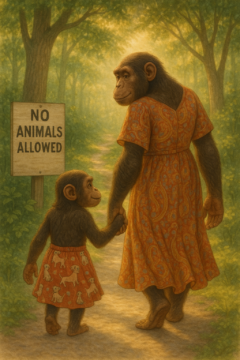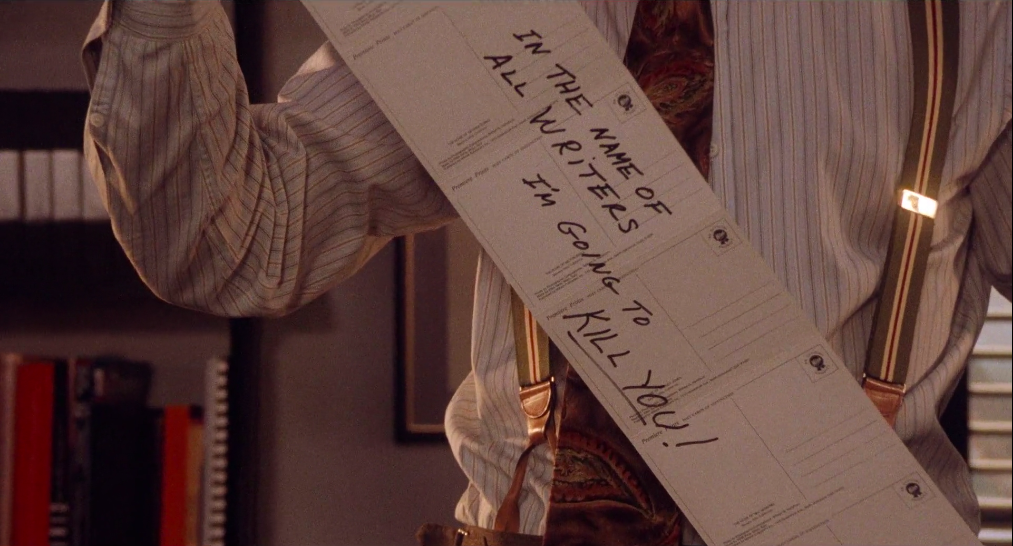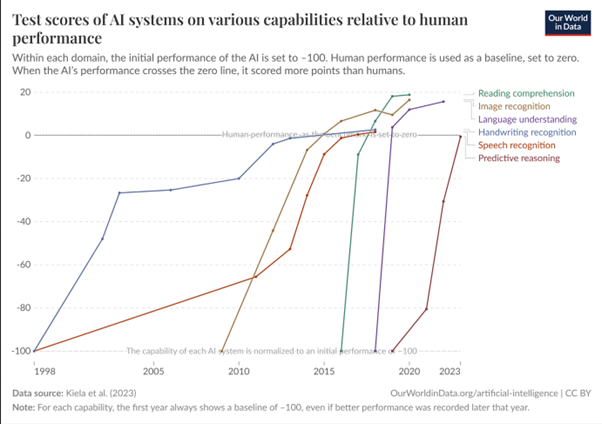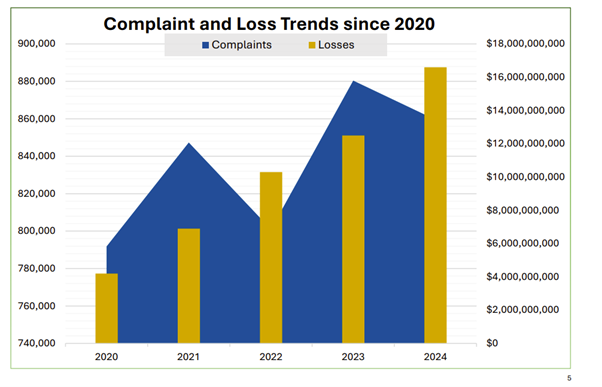 Mulyana Effendi. Harmony Bright, in Jumping The Shadow, 2019.
Mulyana Effendi. Harmony Bright, in Jumping The Shadow, 2019.
Yarn, dacron, cable wire, plastic net.
Enjoying the content on 3QD? Help keep us going by donating now.
 Mulyana Effendi. Harmony Bright, in Jumping The Shadow, 2019.
Mulyana Effendi. Harmony Bright, in Jumping The Shadow, 2019.
Yarn, dacron, cable wire, plastic net.
Enjoying the content on 3QD? Help keep us going by donating now.
by David J. Lobina

Like almost everyone I know, I enjoy listening to music and going to live concerts. What’s more, once upon a time I used to place much importance on someone’s ability to perform at a concert. This was especially the case because I was listening to a lot of rap music in the mid-to-late 1990s and within that world anything that was live was deemed to trump anything that was recorded. Rap was all about free-styling in situ and trying things out in the big outdoors in order to get your props, as they say; it was clearly not about trying things out again and again in a studio until it all clicked. As a matter of fact, some famous rappers did not sound like in their recordings at live gigs, and that counted against them.[i] Performance on a stage was all that mattered; the rest was manipulative and hardly genuine.
But no more: I now think that live music is awkward to witness and recordings give a better idea of one’s true potential as an artist – a better account of one as an artist, that is.
There’s an interesting contrast to be had here between attending live music and attending live sports (recall the lonely footballer!). When you are watching a live sporting event, especially a professional sporting event, you want to see what players are capable of under pressure and against one another in that very moment.[ii] There is something rather engaging in witnessing pros performing at their very best and in competition, with something at stake, an aspect that is lacking in sporting exhibitions and the well-rehearsed bouts of professional wrestling, the latter all theatre with its mock combat, and both just uninteresting.[iii]
So-called rap battles can be competitive too, though most free-style raps are not really created ex tempore – some are performed for the first time in a battle, sometimes with a specific rival as target in mind – and thus the importance of the live element is somewhat reduced here.[iv] The live component is perhaps more important in other musical styles; jazz, we are often told (here and here, for instance), is not about perfection but improvisation, and this is all the more dramatic if it happens in front of an audience – it seems that jazz is all about being oneself during the creation of music, whatever comes out (naturally enough, the result is usually only of interest when it involves talented and experienced musicians).
I grant all that, but this is not what I have in mind when I say that attending live music is awkward. Read more »
Editor’s Note: OpenAI recently published a Preparedness Framework, which is “OpenAI’s approach to tracking and preparing for frontier capabilities that create new risks of severe harm.” We asked ChatGPT (itself developed by OpenAI, of course) to tell us what it thinks of the framework.
by ChatGPT o3

OpenAI positions the framework as its master playbook for “frontier‑model” safety. It:
Selects the risks to track. Three Tracked Categories—Biological & Chemical, Cyber‑security, and AI Self‑Improvement—are judged to satisfy five criteria (plausible, measurable, severe, net‑new, and instantaneous/irremediable) OpenAI.
Keeps an eye on emerging hazards. Five Research Categories (e.g. Long‑range Autonomy, Sand‑bagging, Nuclear/Radiological) are monitored until their threat models mature OpenAI.
Measures capability. Every covered model is run through Scalable Evaluations (automated proxies) and, when needed, Deep Dives (expert red‑teaming, third‑party studies) OpenAI.
Gates deployment behind safeguards. If tests show a model crosses a High capability threshold, release is blocked until safeguards “sufficiently minimize” the risk; for Critical thresholds, safeguards are required even during further training OpenAI.
Runs an internal governance loop. A Safety Advisory Group (SAG) reviews evidence and recommends, but final go/no‑go decisions rest with “OpenAI Leadership”; the Board’s Safety & Security Committee may override OpenAI.
Appendices list illustrative safeguards—refusal training, usage monitoring, KYC, interpretability tools, rate‑limits, etc.—for malicious users, misaligned models, and security threats OpenAI. Read more »
Here we have a small universe of suns.
Behind, a black hole is endeavoring
to swallow them.

The suns are ringed by nebulae
which are no more than clouds
of gas and dust, collections
of atoms, as we all are. But,
in Its capricious way,
the Lord of everything
has now caused links of gravity
to appear as russet shoots
holding the suns in redhot conclaves,
and the nebulae as hovering clouds,
flat, seriously cirrus, veined and green,
looking as if they were, instead, leaves
as comfortable as hammocks
inviting the imagination
of a poet who has looked
and seen.
Jim Culleny, 06/22/24
Photo by Abbas Raza
Enjoying the content on 3QD? Help keep us going by donating now.
by Mike O’Brien
 I take a long time read things. Especially books, which often have far too many pages. I recently finished an anthology of works by Soren Kierkegaard which I had been picking away at for the last two or three years. That’s not so long by my standards. But it had been sitting on various bookshelves of mine since the early 2000s, being purchased for an undergrad Existentialism class, and now I feel the deep relief of finally doing my assigned homework, twenty-odd years late. I think my comprehension of Kierkegaard’s work is better for having waited so long, as I doubt the subtler points of his thought would have had penetrated my younger brain. My older brain is softer, and less hurried.
I take a long time read things. Especially books, which often have far too many pages. I recently finished an anthology of works by Soren Kierkegaard which I had been picking away at for the last two or three years. That’s not so long by my standards. But it had been sitting on various bookshelves of mine since the early 2000s, being purchased for an undergrad Existentialism class, and now I feel the deep relief of finally doing my assigned homework, twenty-odd years late. I think my comprehension of Kierkegaard’s work is better for having waited so long, as I doubt the subtler points of his thought would have had penetrated my younger brain. My older brain is softer, and less hurried.
While I chose this collection as an antidote to topicality and political news, my contemporary anxieties and concerns still found some purchase on these one-and-three-quarter-centuries-old essays of literary indulgence and Christian Existentialism. (Some say Kierkegaard was a proto-Existentialist, or a pseudo-Existentialist, but I don’t think there’s any reason to define such a profligate genre of philosophy so narrowly). As a critic of the press and “the present age”, of course, he has many sharp quips that occasion a smile and a nod, as if to say “you get me, Soren, and I get you”. But that’s the low-hanging fruit, the things that are obvious enough to state unequivocally, like the aphorisms of Nietzsche that sound snappy but do not by themselves reveal anything philosophically significant. The more philosophically meaty works of Kierkegaard’s are more contentious, harder to swallow (especially from a secular standpoint), and sometimes quite baffling on the first encounter (or second, or third).
Of particular interest was “The Sickness Unto Death”, published in 1849, in which he elaborates a spiritual psychology of despair (despair being “The Sickness”, and in the end identified with sin). Being perpetually worried about ecological issues, and about the political and economic conditions mediating humanity’s impact on the planet, despair is always hanging around. It used to be anxiety (another topic of Kierkegaard’s, particularly in 1844’s “The Concept of Anxiety”), when the data on climate change was looking worse and worse. Now that the consensus on global warming is so thick and so dire, the inherent openness of anxiety seems no longer apt to the situation (in Kierkegaard’s conception, anxiety is “the possibility of possibility”, among other formulations). You feel anxious about things that could happen, or things that could go badly. You feel despair about things that will happen, or will go badly. The accumulation of confirming data builds a great wall of probability that seems impenetrable by the merely possible, however desperately you might hold to the abstract truth that the possible still can happen. A despairing state of mind cannot sustain hope for possibility against the weight of probability. This is why Kierkegaard identified God as the only source of a possibility that could provide salvation from despair. I have a hard time seeing the difference between an impossibility which becomes actual through a miracle, and a possibility which is only possible through divine intervention. In either case, the secular situation remains hopeless. Read more »
by Gary Borjesson
Digital technology and AI are transforming our lives and relationships. Looking around, I see a variety of effects, for better and worse, including in my own life and in my psychotherapy practice. My last column, The Fantasy of Frictionless Friendship: why AIs can’t be friends, explored a specific psychological need we have—to encounter resistance from others—and why AIs cannot meet this need. (To imagine otherwise is analogous to imagining we can be physically healthy without resistance training, if only in the form of overcoming gravity!) In this essay, I reflect on some research that drives home why our animal need for connection cannot be satisfied virtually.

I use and delight in digital technology. My concern here is not technology itself, but the so-called displacement effect accompanying it—that time spent connecting virtually displaces time that might have been spent connecting irl. As Jean Twenge, Jonathan Haidt, and others have shown, this substitution of virtual for irl connection is strongly correlated with the increase in mental disorders, especially among iGen (defined by Twenge as the first generation to spend adolescence on smartphones and social media).
The question—What is lost when we’re not together irl?—is worth asking, now and always, because the tendency to neglect our animal needs is as old as consciousness. I smile to think of how Aristophanes portrayed Socrates floating aloft in a basket, his head in The Clouds, neglecting real life. But even if we’re not inclined to theorizing and airy abstractions, most of us naturally identify our ‘self’ with our conscious egoic self. We may be chattering away on social media, studying quantum fluctuations, telling our therapist what we think our problem is, or proposing to determine how many feet a flea can jump (measured in flea feet, of course, as Aristophanes had Socrates doing). But whatever we may think, and whoever we may think we are, our animal needs persist.
You know all this, of course. But I want to speak to the part of us that, nonetheless, posts signs in shop windows and city parks saying “No animals allowed,” and then walks right in—as though that didn’t include us! This subject is a warm one for me, as I work with the mental-health consequences of neglecting our animal need for connections. Sadly, we therapists are not helping matters, readily embracing as many of us do the convenience of telehealth sessions without asking ourselves: what is lost when we’re not in the room together?
What’s lost can be lost by degrees. Read more »
by Jochen Szangolies

The previous essay in this series argued that, given certain assumptions regarding typicality, almost every sentient being should find themself part of a ‘galactic metropolis’, a mature civilization that either has extended across the galaxy, or filled whatever maximal habitat is attainable to capacity. That this is not our experience suggests a need for explanation. One possibility is impending doom: very nearly every civilization destroys itself before reaching maturity. Another is given by the simulation argument: almost every sentient being is, in fact, part of an ‘ancestor simulation’ studying the conditions before civilizational maturity. Both succeed in making our experience typical, but neither seems a terribly attractive option.
Hence, I want to suggest a different way out: that we stand only at the very start of the evolution of mind in the universe, and that the future may host fewer individual minds, not through extinction, but rather, through coalescence and conglomeration—like unicellular life forms merging into multicellular entities, the future of mind may be one of streams of sentience uniting into an ocean of mind.
If this is right, the typical individual experience may be of just this transitory period, but this does not entail a looming doom—rather, just as the transition from uni- to multicellular life, may mean an unprecedented explosion in the richness and complexity of mind on Earth.
It is clear that this would solve the conundrum of our implausibly young civilization: the arguments above hinge ultimately on a faulty generalization to the effect that because human existence up to this point was one of individual minds locked away in the dark of individual bony brain-boxes, that would always be the case. But perhaps, a mature civilization is one in which every agent partakes of a single, holistic mind, or few shifting coalitions of minds exist, or the notion of individuality is eroded to the point of obscurity.
As it stands, this surely seems a fantastical suggestion. While it may receive some credence thanks to explaining the puzzle of our existence during this age of civilizational infancy, that alone seems hardly enough to justify belief in such a far-fetched scenario. Moreover, to many, the prospect might seem scarcely more attrative than that of living in a simulation—or even, that of near-term doom: don’t we loose what’s most important about ourselves, if we loose our individuality? After all, who wants to be the Borg?
Yet I will argue that there are good reasons to take this scenario seriously beyond its solution of the likelihood problem. Read more »
by Derek Neal
 The writer is the enemy in Robert Altman’s 1992 film, The Player. The person movie studios can’t do without, because they need scripts to make movies, but whom they also can’t stand, because writers are insufferable and insist upon unreasonable things, like being paid for their work and not having their stories changed beyond recognition. Griffin Mill, a movie executive played by Tim Robbins, is known as “the writer’s executive,” but a new executive, named Larry Levy and played by Peter Gallagher, threatens to usurp Mill partly by suggesting that writers are unnecessary. In a meeting introducing Levy to the studio’s team, he explains his idea:
The writer is the enemy in Robert Altman’s 1992 film, The Player. The person movie studios can’t do without, because they need scripts to make movies, but whom they also can’t stand, because writers are insufferable and insist upon unreasonable things, like being paid for their work and not having their stories changed beyond recognition. Griffin Mill, a movie executive played by Tim Robbins, is known as “the writer’s executive,” but a new executive, named Larry Levy and played by Peter Gallagher, threatens to usurp Mill partly by suggesting that writers are unnecessary. In a meeting introducing Levy to the studio’s team, he explains his idea:
I’ve yet to meet a writer who could change water into wine, and we have a tendency to treat them like that…A million, a million and a half for these scripts. It’s nuts. And I think avoidable…All I’m saying is I think there’s a lot of time and money to be saved if we came up with these stories on our own.
Writers are slow and they cost money. They get writer’s block. They miss deadlines. They are an impediment to efficiency and progress, and if they are ignored, they might get angry, as Mill finds out when he starts receiving threatening postcards from an anonymous scriptwriter that say things like, “I TOLD YOU MY IDEA AND YOU SAID YOU’D GET BACK TO ME. WELL?” and “YOU ARE THE WRITERS ENEMY! I HATE YOU.”
Writers may be Mill’s “long suit,” as a lawyer at a party tells him, but as Mill himself notes, he hears thousands of pitches a year, and he can only pick twelve. The perennial losers are bound to become resentful, disillusioned—even dangerous. After receiving one particularly disturbing postcard (IN THE NAME OF ALL WRITERS IM GOING TO KILL YOU!), Mill decides to go through his call logs to discover who could be sending him such messages. He thinks it must be a man named David Kahane, and after learning that he’s at a cinema in Pasadena, Mill drives out to meet him, hoping to placate him with a scriptwriting offer for a film that will likely never be made. Read more »
by Kevin Lively
“What this country needs is a good war.”, my Grandfather declared in 2008 while we were gathered at his table in Buffalo with Fox News playing in the background, the TV lit up red with crashing market charts. “It’s the only thing that will fix the economy” he continued. No one pointed out that as these words were spoken, there were, put together, around 200,000 US troops deployed in Afghanistan and Iraq. Now, my grandfather was a good man, hard working, pious, and hardly prone to such statements. Yet, like many Americans who lived through the Great Depression, it was also deeply ingrained in his psyche that the event which led to prosperity during his adulthood, the greatness many are eager to return to, was also the bloodiest human driven catastrophe in history, WWII.

This is of course a widely accepted truism among US economists and historians, as the state department’s Office of the Historian will tell you. It is also part of the cultural fabric to extol the moral virtues of this particular war, given that it destroyed a regime which essentially defines the modern conception of evil. Of course, as with everything else in history, some of this triumphalist patting ourselves on the back is white-washed. It turns out there was more support in the USA for Nazism before the war than is often remembered, including in the business arrangements of the Bush dynasty’s progenitor. This should not be too surprising given that leading medical journal editors in the USA were urging that the public be persuaded on moral grounds to adopt similar eugenics policies as the Nazis enforced in the 1930s.
In any case, the other accepted truism about this turn of events is that America, as the victorious industrial superpower, realized that its isolationism had only helped lead to the calamity. Therefore, like it or not, it must shoulder the burden of power, stand against the rising communist threat to make the world safe for democracy, and establish the Pax Americana which we have enjoyed since.
As with any good myth, much of this is true. Read more »
In the past year or so, I have started taking a lot of photos of the ground as I take my usual walk along the same route every day. This recent photo of the cobblestones of Franzensfeste, South Tyrol, showered with flower petals from nearby trees, is one of them.
Enjoying the content on 3QD? Help keep us going by donating now.
by Dick Edelstein

The visit by Pope Francis to Ireland in 2018 as part of the World Meeting of Families was important since it was the first one since the historic visit by Pope John Paul II in 1979, an event that drew around one and a quarter million people to a mass in Dublin’s Phoenix Park, the biggest crowd ever seen in the country, amounting to almost one-third of the population. Since then, religious feeling in Ireland had been on the wane, along with the Church’s authority over those who considered themselves Catholics, which was in a near-fatal slump. The Church was facing an uncertain future with the number of new seminarians dropping to record lows for several years.
Still, that visit in 2018 had generated certain expectations. First, a turnout of half a million people was expected in Phoenix Park, a figure that proved to be overestimated by around 400 percent. The actual turnout—some 130,000 people—was much smaller. However, that was nothing compared to the other expectation. On account of widespread cases of sexual molestation by clergy and a generalized public dissatisfaction over the failure of the church to recognise its history of abuse and make suitable reparations to the victims, many Irish people were expecting Pope Francis, given his reputation as a liberal, to issue a detailed and lengthy apology. In recent decades, public outrage about sexual abuse by clergy had been a worldwide occurrence, but the issue had special significance in Ireland, where the moral tone of the entire country since independence had been set by the Catholic church, despite its longstanding record of abuse.
Other factors affected Irish people’s expectations of a full apology from the Pope. One of these was the Magdalene laundries scandal. Throughout much of the twentieth century, thousands of Irish women had been incarcerated in Magdalene institutions, most of which were run by Catholic religious orders. The women were forced to work without pay or benefits. Despite the outrageous violation of the women’s human rights, the Irish government colluded with their detention and was complicit in their treatment. In 2011, a group called Justice for Magdalenes made a submission to the U.N. Committee Against Torture, arguing that the Irish government’s failure to deal with the abuse amounted to continuing degrading treatment in violation of the Convention Against Torture and that the state had failed to promptly investigate “a more than 70-year system of torture or cruel, inhuman or degrading treatment of women and girls in Ireland’s Magdalene laundries”.
The story of the Magdalene Laundries was still reverberating in the public consciousness when in March 2017 Ireland was shocked by the discovery that, between 1925 and 1961, the bodies of 796 babies and young children had been interred in the grounds of the Bon Secours Mother and Baby Home in Tuam, County Galway, many in a septic tank. Catherine Corless, the local historian who exposed the scandal, complained to Irish legislators that nothing had been done to exhume the bodies after her research came to light despite expressions of “shock and horror” from the Government and the President. Instead, the site had been returned to its original condition. As with the Magdalene scandal, the authorities initially showed unimaginable insensitivity and cruelty towards affected families.
Thus, when Pope Francis came to visit in August 2018, Irish people expected a full and sincere apology because of his reputation for sympathy towards a number of liberal causes, his commitment to the protection of vulnerable people, and on account of a series of special circumstances in Ireland. But surprisingly, no sufficiently firm apology was forthcoming. Read more »
by Rachel Robison-Greene

In my youth I used to play in the wooded area behind my parent’s house in a space that seemed, from the vantage point of a child, to be vast. Those areas exist now only in precious cloudy corners of my memory. In the external world, they have long been replaced by housing developments and strip malls. Then, rain or snow may have threatened to keep me indoors. Now the children are kept inside by fire season, when the air is toxic, the sun is some new color, and the nearby mountains disappear from view. “Fire season has always existed”, I am told, and some people believe it.
I was taught that the structure of the government of the United States would prevent any one branch from exerting tyrannical power over the people. Elected officials craft legislation and well-qualified, appointed judges protect against the tyranny of the majority. “Judges can’t stand in the way of the will of the President” and “this country has never been a democracy”, I am told, and some people believe it.
The political climate is changing faster than many of us can absorb, and we are left wandering the woods during fire season without any visible and reliable points of reference to guide us home. We can only hope that we leave the fog resembling the people we were when we entered it. I find myself wondering which changes I’ll be willing to accept. Will I come to regard some of my values as relics of a bygone era and will I be forced into that position by a sheer will to survive? Is this change in myself something to be feared?
It is a painful but common feature of the human experience to be afraid of our own capacity for change. As Jean Paul Sartre puts the point, “if nothing compels me to save my life, nothing prevents me from precipitating myself into the abyss.” I may experience fear at the prospect that I may be pushed from the cliff, but I feel anguish at the possibility that, when I find myself at the cliff’s edge, I might jump. Perhaps more disturbingly, I might find myself changing in fundamental ways that I currently find unacceptable. Should I spend my time fearing that possibility? Read more »
by Malcolm Murray

Enrico Fermi famously asked – allegedly out loud over lunch in the cafeteria – “Where is everybody?”, as he realized the disconnect between the large number of habitable planets in the universe and the number of alien civilizations we actually had observed.
Today, we could in a similar vein ask ourselves, “Where is all the AI-enabled cybercrime?” We have now had three years of AI models scoring better than the average humans on coding tasks, and four years of AI models that can draft more convincing emails than humans. We have had years of “number go up”-style charts, like figure 1 below, that show an incessant growth in AI capabilities that would seem relevant to cybercriminals. Last year, I ran a Delphi study with cyber experts in which they forecast large increases in cybercrime by now. So we could have expected to be seeing cybercrime run rampage by now, meaningfully damaging the economy and societal structures. Everybody should already be needing to use three-factor authentication.

But we are not. The average password is still 123456. The reality looks more like figure 2. Cyberattacks and losses are increasing, but there is no AI-enabled exponential hump.

So we should ask ourselves why this is. This is both interesting in its own right, as cyberattacks hold the potential of crippling our digital society, as well as for a source of clues to how advanced AI will impact the economy and society. The latter seems much needed at the moment, as there is significant fumbling in the dark. Just in the past month, two subsequent Dwarkesh podcasts featured two quite different future predictions. First, Daniel Kokotajlo and Scott Alexander outlined in AI 2027 a scenario in which AGI arrives in 2027 with accompanying robot factories and world takeover. Then, we had Ege Erdil and Tamay Besiroglu describing their vision, in which we will not have AGI for another 30 years at least. It is striking how, while using the same components and factors determining AI progress, just by putting different amounts of weight on different factors, different forecasters can reach very different conclusions. It is like as if two chefs making pesto, both with basil, olive oil, garlic, pine nuts, cheese, but varying the weighting of different ingredients, both end up with “pesto,” but one of them is a thick herb paste and the other a puddle of green oil.
Below, I examine the potential explanations one by one and how plausible it is that they hold some explanatory power. Finally, I will turn to if these explanations could also be relevant to the impact of advanced AI as a whole. Read more »
by Barry Goldman

When I get up in the morning I drink a pot of coffee and read the paper. The coffee makes me irritable. The paper makes me furious and miserable. That sets the tone for the rest of the day.
I agree with Ezra Klein that the constitutional crisis is not coming, it is here. When the Trump administration can ignore a unanimous ruling of the Supreme Court, the breakdown of the rule of law is not threatening, it has arrived.
I am a lawyer. I speak the language. I faithfully listen to Talking Feds and Strict Scrutiny, and I read the relevant Substacks. But I’m afraid all the smart lawyers in all those places are making the same mistake. The Trump people don’t give a damn about the definition of “invasion” or “predatory incursion” under the Alien Enemies Act of 1798. And they don’t give a damn about the difference between “facilitate” and “effectuate” in the Supreme Court’s order in the Abrego Garcia case. Arguing about legal definitions with Trumpers is playing chess with a pigeon. The pigeon knocks over the pieces, shits on the board, and struts around like he won. Pigeon chess has nothing to do with chess, and Trump administration litigation has nothing to do with law. This realization accounts for what I have taken to calling my macrodepression.
When I’m done with the paper and my daily dose of legal commentary, I sit down at my desk and toggle to microdepression. I look at my email. Inevitably, the people I’m looking forward to hearing from have not written. The people who have written are either cancelling something it took weeks to schedule, trying to sell me something I don’t want, or writing to tell me another one of my friends is sick or dead.
Then the phone starts ringing. Read more »
 Sughra Raza. After The Rain. April, 2025.
Sughra Raza. After The Rain. April, 2025.
Digital photograph.
Enjoying the content on 3QD? Help keep us going by donating now.
by Martin Butler
In the 1980s being non-judgmental was very much in vogue. The idea was that you should withhold from morally judging other people and their actions, at least in a significant number of cases. It was an imperative that I came across in all sorts of contexts. I, however, thought it very misguided. Why should we be non-judgemental? It seemed like an abdication of our moral commitments, a kind of moral cowardice. And in any case, I thought it almost impossible not to judge other people and their actions. Of course we might choose not to voice those judgements, and perhaps this is what those promoting the non-judgmental attitude really meant. At the time I thought non-judgmentalism resulted from a half-baked moral subjectivism, the idea that there is no objective right or wrong and so I shouldn’t expect the actions of others to meet my own subjective moral standards – to do so would be an illegitimate imposition of my morality onto others.
 Morality, according to this view, is more like taste, and in matters of taste I don’t expect others to be like me. This is of course incoherent since the very imperative to be non-judgmental is itself a moral demand, which must claim some level of objectivity since it is a rule that others are expected to follow. Judging others, according to non-judgmentalism, is something we ought not to do. It is presented as an objective moral rule.
Morality, according to this view, is more like taste, and in matters of taste I don’t expect others to be like me. This is of course incoherent since the very imperative to be non-judgmental is itself a moral demand, which must claim some level of objectivity since it is a rule that others are expected to follow. Judging others, according to non-judgmentalism, is something we ought not to do. It is presented as an objective moral rule.
A moral theory that at least appears to justify a limited form of non-judgmentalism is the moral philosophy of liberalism as presented by John Stuart Mill. This is encapsulated in the harm principle: we should be allowed to act as we want provided we don’t harm others. But of course this doesn’t stop us judging the actions of others, it merely requires that we don’t interfere or attempt to curb those actions simply because we disapprove of them, with the proviso that others are not harmed. Although it is notoriously difficult to establish a clear definition of ‘harm’, the virtue of this approach is that it allows for a distinction between what we might regard as morally wrong and what the state should outlaw. Judging something offensive, for example, cannot be regarded as sufficient grounds for it to be outlawed. It does not however get to the nub of what non-judgmentalism is about. Read more »
by Eric Schenck

There are two types of readers: People that can read just about anywhere, and those that prefer a specific location to do it. I’m the second one. To describe where I’ve done most of my reading, I use the phrase “reading place.”
“Reading spot” sounds too specific. “Reading nook” also isn’t quite accurate.
I’ve had a number of reading places throughout the years, and they’ve all given me something different. Here are just a few of them…
It starts in my parent’s backyard. My first reading place is a deck. It’s big and brown and you get slivers if you’re not careful. Some of my first memories are on this deck, and some of my very first books are read here.
I have a variety of reading places as I get older. One of my favorites is my car. It’s named Marvin, and it’s a 1995 Mercury Grand Marquis. Along with baseballs and fast food wrappers, I also store books. Some of them are from my high school classes. Others are stolen from my sister. I lean back in the front seat, after school ends and before baseball practice starts, and knock out a few pages.
By the time I make it to college, my reading place loses a bit of it’s character. Gone is a place specific to me, and in comes one that is applicable to just about everybody: the school library.
It’s still wonderful, though. I’m surrounded by fellow readers that love learning for the sake of it and aren’t afraid to get into nerdy conversations. It makes me feel like I’ve found my people. I like to look at books I’ll never read and imagine I will. It’s my first struggle with tsundoku (getting more books than you can actually read).
My first two years at college, this is where most of my reading happens. There’s no place in particular – usually whatever study room I can find that’s still empty.
The last two years is where I find my place. Read more »
“Something there is that doesn’t love a wall,”
a poet said imagining friendly neighbors
working their way along that which stood between
resetting fallen gneiss and granite loaves and balls
fallen to each to keep their wall intact
while one questioned the irony of friendly walls
and the other made a prima facie case
for an inherent friendliness
in their practicality
so, we’ve had walls and walls remain,
not of stone but of blood and bone,
walls built of double helixes
spiraling through time,
hydrogen-mortared pairs of
adenine guanine cytosine thymine,
walls smaller than any past poet’s wall-builder
might imagine, but centuries stronger
than Hadrian’s real or Alexander’s
mythic wall which locked the Gogs
and Magogs of alien tribes
behind stone or iron blocks
to keep the builders safe from
differences that barely exist
in the protein hieroglyphics
of nature-made chemical bonds
of a double helix making us Gogs
and Magogs of each other
as we spiral through worlds
hurting and killing to uphold
our imagination’s chronic
belief in quixotic walls
and spurious distinctions
which heap between us
grudges and grief
Jim Culleny
12/13/16
Enjoying the content on 3QD? Help keep us going by donating now.
by Angela Starita

Driving through Journal Square in Jersey City with a friend, we’re both amazed by the construction that has happened there in the last two years. In this case, amazement is a form of horror: the new buildings, an array of towers, are grotesquely out of scale with the rest of the city. The worst offender is a blue-glass behemoth calling itself The Journal, the name serving as the only reference to its setting in Journal Square. As you head north, Kennedy Boulevard, the city’s main thoroughfare, veers to the left and heads up to Union City, West New York, and North Bergen. Until a few years ago, that curve underscored the Boulevard’s role as a connector, a common thread and organizing principle of those Hudson County towns, starting to the south in Bayonne. Now the approach to the Square is dwarfed by the new building, one of dozens that have gone up in a 10-block radius in fewer than 5 years. The road itself goes unimpeded, but visually the building creates a massive visual wall, intimidating, arrogant, an absolute full stop.
My friend says what he dislikes most about so much new construction is its uniformity, so unrelated to the specifics of a place. I do a bad job trying to explain the roots of un-placeness in Modernist architecture: how after the bloodshed of World War I, European architects thought they had a duty to create work that could be, as they saw it, universal. I talk about Le Corbusier’s design of the Villa Savoye as its own system, regardless of landscape, that could be plugged into almost any setting. It was like making an Esperanto for space, I say; the idea was to supersede national styles and create buildings that met people’s needs without recourse to ornament or any device that covered structural “truth.” To these architects, if our organization of space could literally foster communication, maybe prevent even war. I want my friend to see that whatever the motivations of developers, the history of architecture as disconnected object has at least some noble roots. Well, he said, I still don’t like that it has nothing to do with where it’s being built.
Solutions to the problem at the heart of our exchange—how to shape, update, and expand a physical environment with integrity—have been varied and frequently polemical: the tabula rasa approach of Le Corbusier, in some ways epitomized by Brasilia, is a frequent if misunderstood whipping boy of both urbanists and the public. And while there’s a complex and sometimes poignant story behind those plans, I can’t disagree that the results of such ready-made towns—those designed by famous architects as much as the off-the-shelf developments across the country—are alienating. And of course, the blank-slate philosophy is appealing in a country where economic health is measured in housing starts. In Florida, my father’s town bought his tiny neighborhood, mostly woods, via eminent domain. Their nominal object was to create a more walkable environment by tearing down the existing houses and building new houses along with a nearby shopping street. When I asked a town manager, why not just incorporate the existing dozen or so houses into the plan, he claimed that developers only want a blank slate. Who knows if this was accurate or not, but he certainly told the truth when I asked why do this at all? “That area doesn’t generate enough income.” Read more »